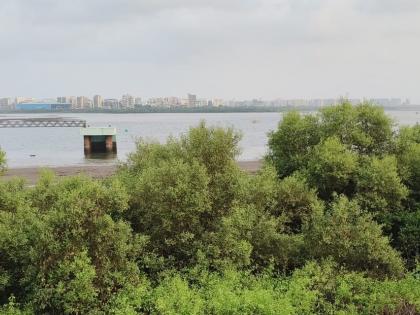Navi Mumbai to Get Largest Share of 79 CCTV Installations in Rs 120 Crore ‘Eye in The Sky’ Surveillance Project
By Amit Srivastava | Updated: September 19, 2024 12:12 IST2024-09-19T11:59:40+5:302024-09-19T12:12:45+5:30
Navi Mumbai will receive the largest portion of 79 CCTV installations as part of a Rs 120 crore high-tech ...

Navi Mumbai will 79 CCTV installations for security of mangroves
Navi Mumbai will receive the largest portion of 79 CCTV installations as part of a Rs 120 crore high-tech video surveillance project aimed at safeguarding 669 “sensitive” mangrove locations in the Mumbai Metropolitan Region (MMR) under the project called ‘Eye in The Sky,’.
This initiative, led by the Mangrove Cell under the State Forest Department, will also cover Mumbai, Thane, Bhiwandi, and Uran, according to an e-tender issued on Wednesday. The tender will close on September 24, with bids scheduled to open on October 15. If all goes as planned, the surveillance network, featuring 195 CCTV cameras, will be operational within a year.
S.V. Rama Rao, head of the Mangrove Cell, emphasized that this “high priority” project aims not only to ensure the safety and security of mangrove areas but also to reassure citizens that the city’s environment is being actively protected and nurtured.
The surveillance project, nicknamed the ‘Eye in The Sky,’ will span mangrove areas managed by the Forest Department, stretching from Colaba to Panje and Dahisar to Panvel. The network will include an Automatic Number Plate Recognition (ANPR) system integrated with key databases such as VAAHAN Sarathi, Passport, Crime and Criminal Tracking Network and Systems (CCTNS), Prisons, and the Automated Multimodal Biometric Identification System (AMBIS).
B.N. Kumar, director of NatConnect Foundation, who has been advocating for over five years for mangrove protection and CCTV surveillance, expressed satisfaction that the government is finally taking action. He noted that mangroves and wetlands have long been under attack from debris dumping and land mafias, threatening the city’s ecosystem.
However, Kumar pointed out that the CCTV network will primarily cover mangroves under the Forest Department's protection, while large areas of mangroves under other government agencies, such as CIDCO and JNPA, remain unprotected. Mangroves in areas allocated to the Navi Mumbai Integrated Industrial Authority (formerly NMSEZ) continue to face destruction unchecked, he added.
Nandakumar Pawar, a green activist and leader of Sagar Shakti, welcomed the fact that the CCTV network will include the Panje wetland. The list of proposed surveillance points includes the "Panje wetland entry," which he said is an official acknowledgment of the 289-hectare intertidal water body as a wetland. Pawar criticized CIDCO for allocating this and other wetlands to NMSEZ, despite opposition from environmental activists.
Similarly, activist Jyoti Nadkarni called for greater protection in areas like Kharghar, where mangrove zones remain under threat. She emphasized that these wetlands, crucial for biodiversity, are under constant attack, and CIDCO has yet to transfer them to the Forest Department, violating a High Court order.
The proposed surveillance system, equipped with night vision cameras, will monitor illegal activities and movement in mangrove areas, helping to prevent damage to both the environment and local livelihoods. The Mangrove Cell will also establish a Central Control Room, Zonal Recording Station, Storage Backup Station, and Zonal Viewing Centre. The system's alarm management module will enable continuous monitoring and event-triggered alarms from cameras and other devices, ensuring the network operates smoothly.
Open in app